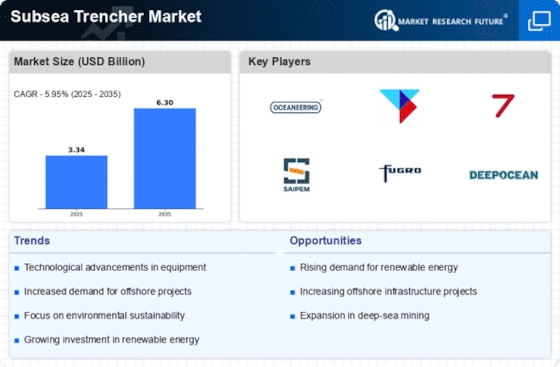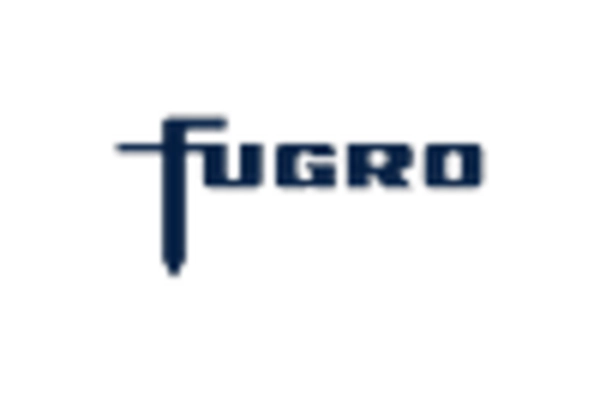Increasing Demand for Renewable Energy
The Subsea Trencher Market is experiencing a notable surge in demand driven by the global shift towards renewable energy sources. As countries invest heavily in offshore wind farms and tidal energy projects, the need for efficient subsea trenching solutions becomes paramount. The International Energy Agency indicates that offshore wind capacity is expected to reach 234 GW by 2030, necessitating advanced trenching technologies to lay cables and pipelines. This trend suggests that subsea trenchers will play a critical role in facilitating the infrastructure required for these renewable projects, thereby propelling market growth.
Expansion of Offshore Oil and Gas Exploration
The Subsea Trencher Market is significantly influenced by the ongoing expansion of offshore oil and gas exploration activities. As energy companies seek to tap into untapped reserves, the demand for subsea trenchers to install pipelines and cables is likely to increase. According to the U.S. Energy Information Administration, offshore production is projected to account for a substantial portion of total U.S. crude oil production by 2025. This growth in offshore exploration activities necessitates advanced trenching solutions, thereby driving the market for subsea trenchers.
Technological Innovations in Subsea Equipment
Technological advancements in subsea equipment are reshaping the Subsea Trencher Market. Innovations such as autonomous trenching systems and enhanced navigation technologies are improving operational efficiency and reducing costs. The integration of artificial intelligence and machine learning into trenching operations is expected to optimize performance and safety. As these technologies become more prevalent, they are likely to attract investment and interest from various sectors, further stimulating market growth. The ability to perform complex trenching tasks with precision and reliability positions subsea trenchers as indispensable tools in modern subsea operations.
Rising Investment in Marine Research and Development
Investment in marine research and development is emerging as a key driver for the Subsea Trencher Market. As academic institutions and private companies focus on exploring the ocean's depths, the need for advanced trenching technologies to support research initiatives is increasing. The National Oceanic and Atmospheric Administration has highlighted the importance of subsea infrastructure in marine research, which includes the installation of sensors and monitoring equipment. This growing emphasis on marine exploration and conservation is likely to create new opportunities for subsea trenchers, thereby enhancing market prospects.
Regulatory Support for Subsea Infrastructure Development
The Subsea Trencher Market benefits from increasing regulatory support aimed at enhancing subsea infrastructure development. Governments are implementing policies that encourage investment in subsea projects, particularly in energy and telecommunications. For instance, regulatory frameworks that streamline permitting processes for subsea cable installations are likely to foster growth in the market. This supportive environment not only facilitates the deployment of subsea trenchers but also enhances the overall efficiency of infrastructure projects, thereby contributing to the expansion of the market.


















Leave a Comment